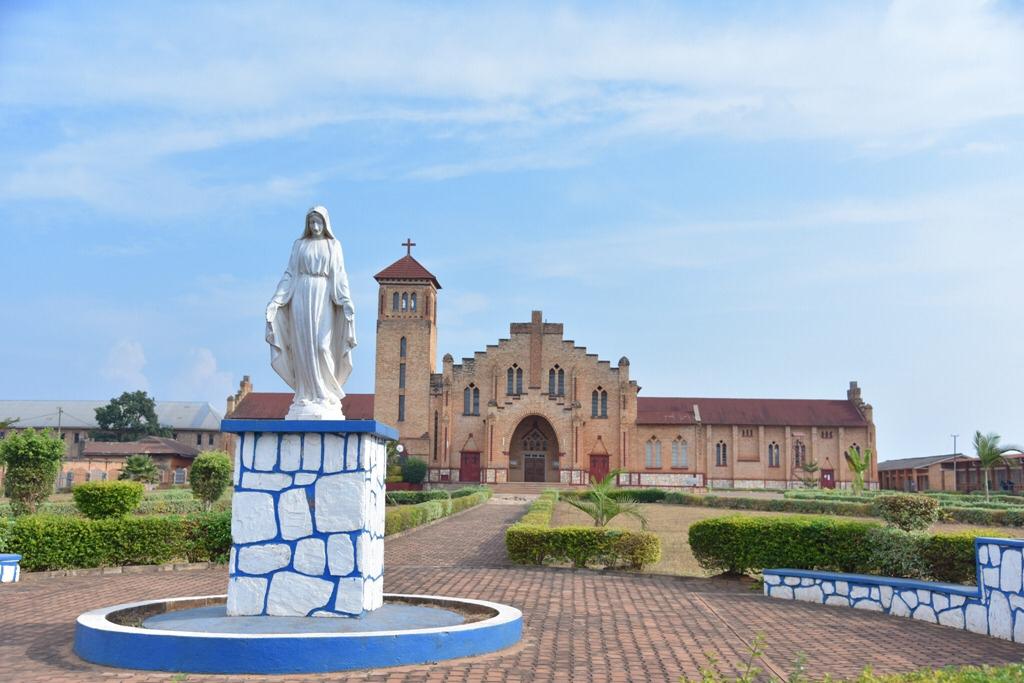
ABOUT THE DIOCESE OF BUTARE
The Catholic Diocese of Butare, located in the southern region of Rwanda, is one of the country’s most historically significant and pastorally active dioceses. It serves as a spiritual home to thousands of faithful and plays a vital role in the religious, educational, and social development of the region.
Geographically, the diocese is strategically positioned. It is bordered to the south by the Republic of Burundi, fostering cross-border pastoral collaboration and cultural exchange. To the north, it shares boundaries with the Diocese of Kabgayi, Rwanda’s oldest diocese and former metropolitan see. The Mwogo River marks the natural boundary between Butare and the Diocese of Gikongoro, which was later carved out of Butare’s territory. To the southeast lies the Archdiocese of Kigali, the current metropolitan see of Rwanda, under which Butare functions as a suffragan diocese.
The Diocese of Butare was canonically erected on September 11, 1961, under the name Astrida, reflecting the colonial name of the city now known as Butare. At its inception, it was part of the ecclesiastical district of the Archdiocese of Kabgayi and covered a vast area of 4,684 square kilometers. This made it one of the largest dioceses in Rwanda at the time, encompassing a wide range of parishes, mission stations, and Catholic institutions.
Over time, the boundaries of the diocese were redefined to better serve the growing Catholic population and to respond to pastoral needs. In 1976, a territorial adjustment with Kabgayi slightly reduced Butare’s area. A further reduction occurred in 1989, and in 1992, the creation of the Diocese of Gikongoro significantly reshaped Butare’s southern boundary. Following these changes, the diocese now covers approximately 1,958 square kilometers, with a more focused pastoral reach.
The first bishop of Butare was His Excellency Monsignor Jean Baptiste Gahamanyi, a pioneering figure in the Rwandan Church. He was ordained bishop on January 6, 1962, and served faithfully for 35 years. His episcopal motto, In Caritate et Pace (“In Charity and Peace”), reflected his deep commitment to reconciliation, unity, and pastoral care. Under his leadership, the diocese expanded its educational institutions, strengthened catechetical formation, and promoted social development. He resigned in January 1997 and passed away on June 19, 1999, leaving behind a legacy of peace and service.
He was succeeded by His Excellency Monsignor Philippe Rukamba, who was appointed bishop on January 18, 1997, and ordained on April 12, 1997. His motto, Considerate Iesum (“Consider Jesus”), emphasized a Christ-centered approach to ministry, inviting the faithful to deepen their relationship with the Lord. Bishop Rukamba led the diocese through a period of renewal, focusing on healing after the 1994 genocide, strengthening seminary formation, and promoting justice and peace initiatives. His tenure was marked by a strong emphasis on education, interreligious dialogue, and pastoral outreach.
The current bishop, Monsignor Jean Bosco Ntagungira, was appointed by Pope Francis on August 12, 2024, and ordained on October 5, 2024. His episcopal motto, Audiant Et Laetentur (“Let them hear and rejoice”), reflects a joyful and inclusive vision of evangelization. Bishop Ntagungira brings a pastoral sensitivity rooted in healing, mission, and community engagement. His leadership is expected to build upon the foundations laid by his predecessors while responding to the contemporary challenges facing the Church in Rwanda.
Today, the Diocese of Butare comprises 26 parishes, each serving as a center for worship, catechesis, and community life. These parishes are supported by a network of schools, health centers, seminaries, and lay movements. The diocese continues to play a vital role in promoting education, social justice, and spiritual formation. It is known for its strong emphasis on reconciliation, especially in the wake of Rwanda’s tragic history, and for its commitment to building a Church that is close to the people.
The Diocese of Butare remains a beacon of hope, unity, and faith in Rwanda, embodying the Church’s mission to proclaim the Gospel, serve the poor, and foster peace among all people.
